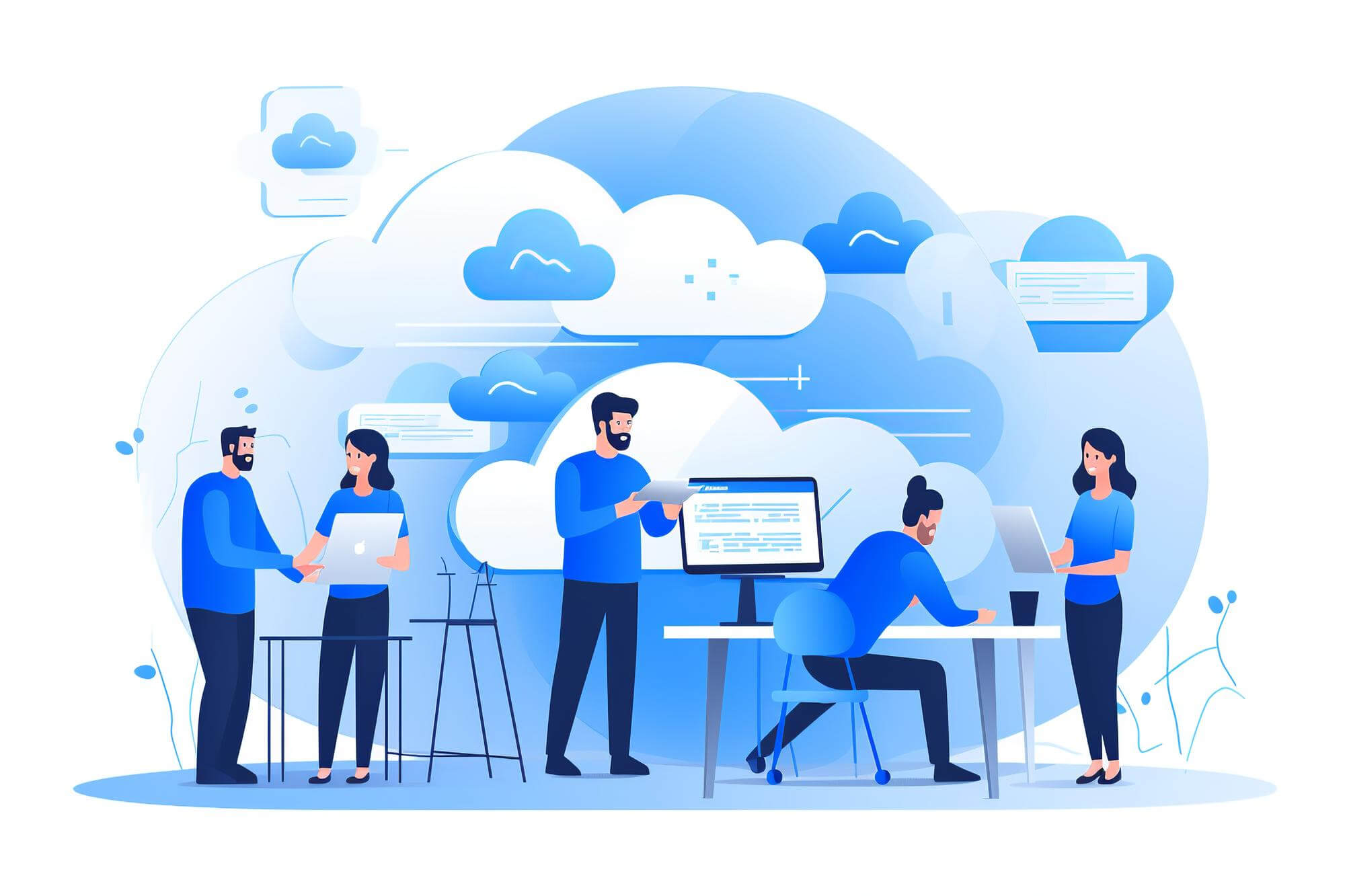
Navigating the Software as a Service (SaaS) world can be daunting with its myriad offerings tailored to diverse business needs. However, by understanding the essential differences between vertical and horizontal SaaS, you're taking the first step toward making an informed decision. Fortunately, we've broken it down for you.
Vertical SaaS is designed for specific industries, focusing on specialized functionalities unique to that market. On the other hand, horizontal SaaS offers versatile solutions suitable for various business domains, such as project management or customer relationship systems.
But there's more beneath the surface. Keep reading to discover the nuances, strengths, and pitfalls of each, guiding your next SaaS choice.
Software as a Service (SaaS) is a software delivery model that utilizes cloud computing to provide applications to users on a subscription basis. This approach has become increasingly popular as it allows organizations to access cloud-based Software without installing or maintaining on-premises infrastructure.
SaaS applications can be accessed through web browsers, and the software providers are responsible for their maintenance and updates. This ensures that users always have access to the latest features and capabilities, delivering increased efficiency and productivity benefits.
The subscription-based model offers flexibility by allowing users to scale the software usage according to their needs. Additionally, SaaS applications can be accessed from any device with an internet connection, promoting mobility and remote working capabilities.
The widespread adoption of SaaS solutions can be attributed to their simplicity and convenience compared to conventional software installation processes. With the continuous growth of cloud computing and increasing demand for cost-effective and accessible software options, SaaS is poised to remain a prominent fixture in the world of technology.
Vertical SaaS refers to software solutions designed specifically for a particular industry or niche market. These solutions address a specific sector's unique requirements and challenges, including industry-specific standards and features. The primary advantage of vertical SaaS products is their ability to deliver tailored functionality that caters to the exact needs of a particular business domain. As a result, vertical SaaS solutions typically offer a more specialized and targeted value proposition for their users.
On the other hand, horizontal SaaS caters to a broader audience, providing more generalized solutions that can be applied across various industries and business functions. These all-in-one solutions often encompass basic features and tools common to most businesses, such as customer relationship management (CRM), human resources (HR) management, or project management software. The main benefit of horizontal SaaS products is their broad applicability, which allows businesses of different sizes and industries to benefit from the same core functionalities.
The choice between vertical and horizontal SaaS usually depends on the company's needs and priorities. A vertical SaaS product may provide a more effective, tailored solution for businesses operating in a niche market or with highly specialized requirements. In these cases, industry-specific features and compliance with industry-specific standards can be crucial to the company's operations and success.
Conversely, organizations prioritizing broader functionality and flexibility may opt for a horizontal SaaS offering. These solutions can be more cost-effective, as they can be used across multiple departments and industries, often allowing for seamless integration with other software tools and platforms.

When it comes to Software as a Service (SaaS), there are two main categories: vertical and horizontal SaaS. Both types serve different purposes and cater to various industries.
Horizontal SaaS solutions cater to a broad range of industries and offer general functionality that can be customized based on the needs of different businesses. Some common examples of horizontal SaaS include Salesforce, a widely-used customer relationship management (CRM) Software; Slack, a popular communication platform; QuickBooks, an accounting software; and Asana, a project management tool. These platforms serve a range of industries and can be adapted to suit various business processes.
On the other hand, vertical SaaS solutions are designed to cater specifically to the needs of one industry. They offer extensive customization options and industry-specific functionalities. Guidewire, a software used in the insurance industry, is an example of vertical SaaS, as it provides tailored features that meet the specific requirements of insurance companies. Zocdoc and Zillow are two other examples of vertical SaaS solutions serving the healthcare and real estate industries, respectively.
Some SaaS solutions blur the line between vertical and horizontal offerings. For instance, HubSpot is primarily a marketing and sales tool but has been tailored to specific industries such as tourism, education, and manufacturing. WhenIWork offers scheduling and time management solutions but is widely adopted by industry segments like retail, healthcare, and hospitality.
In some cases, conventional tools that were not initially considered SaaS have evolved into Software with SaaS capabilities, such as Microsoft Outlook and Dropbox. These tools, originally meant for personal or basic business use, have expanded to provide more flexible and adaptable features that can be employed by various industries.
Alright, let's wrap things up.
Vertical SaaS is like that bespoke tailor downtown, crafting solutions specially made for industries like healthcare or finance. It dives deep, understanding and solving the unique challenges of its chosen field.
On the flip side, horizontal SaaS is your friendly department store. Offering a bit of everything, it's versatile and great for businesses with broader or mixed needs, handling everything from project management to HR.